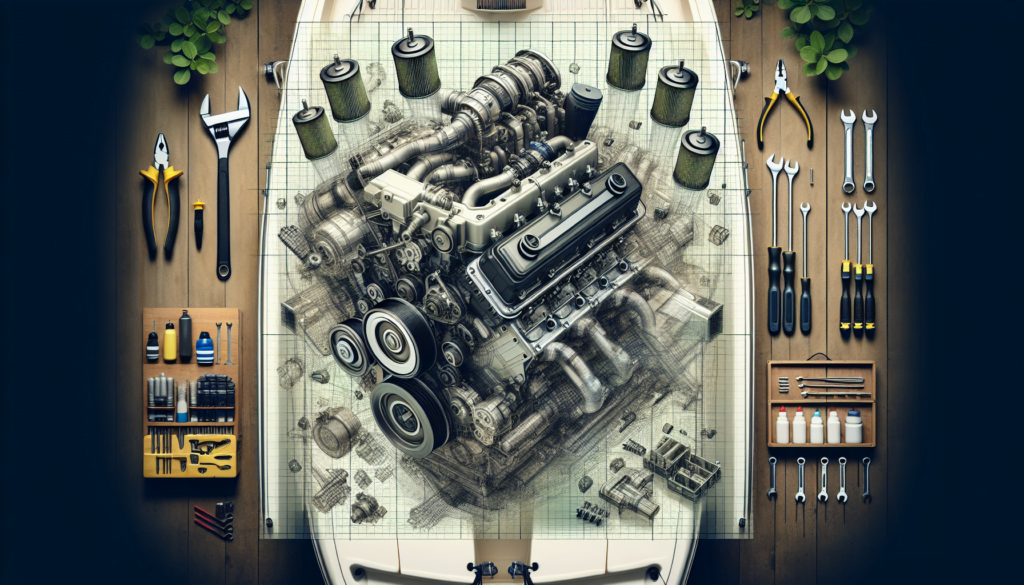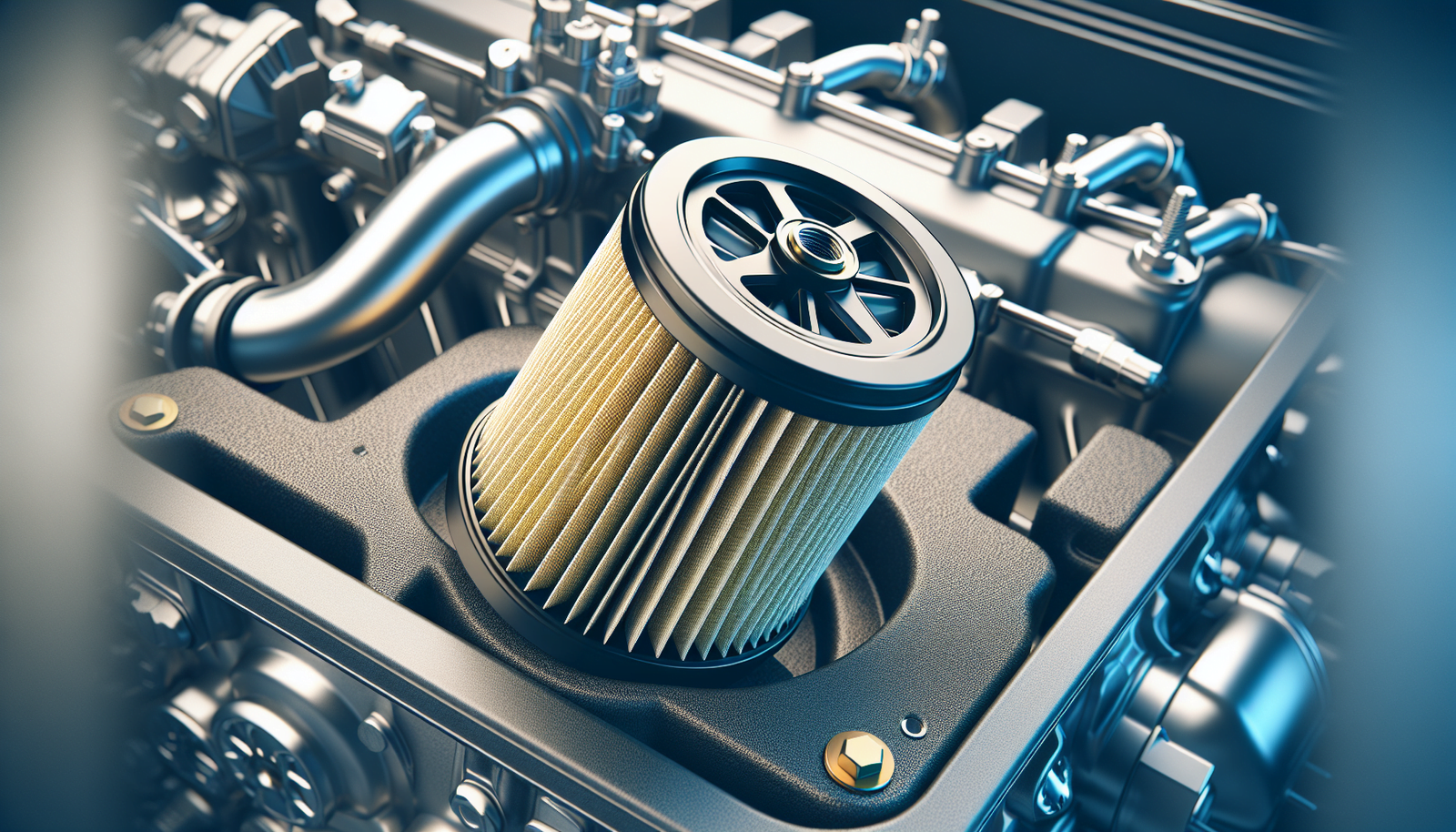Sailing through crystal clear waters on a sunny day is unbeatable, but you know as well as anyone that boat maintenance—particularly engine upkeep—is key for ensuring smooth voyages. Today, we’re pulling back the curtain on boat engine care with a special focus on filter replacement. This comprehensive guide provides detailed steps, from selecting the right filter for your marine motor to expertly installing it, and even to properly disposing of the old one. Don’t let a clogged filter ruin your seaside getaway; with thoughtful preparation and a handy set of tools, you can keep your boat’s engine purring beautifully. This is all about the ins and outs of replacing boat engine filters.

Understanding the Importance of Boat Engine Filters
When it comes to maintaining your boat and ensuring it functions optimally, engine filters play an essential role. Every boat owner should have an understanding of these vital components and the role they play.
Recognizing the role of engine filters in boat engines
An engine filter is a key component that protects your boat’s engine by separating and removing impurities from fluids or air before they reach crucial parts of the engine. Without a proper functioning filter, these impurities can cause major damage over time, leading to expensive repairs or even engine failure.
Implications of a dirty or worn out filter
A dirty or worn-out filter is troublesome because it cannot effectively do its job. It may allow harmful contaminants to pass through into the engine, damaging vital components, and compromising the overall performance of the boat. Additionally, this could result in increased fuel consumption, decreased power output, and in worst-case scenarios, complete engine failure.
Benefits of regular replacing of boat engine filters
Regular replacing of engine filters contributes greatly to enhancing the longevity and efficiency of your engine. Not only does it allow for optimal fuel economy and power output, but it also saves you from potentially heavy repair expenses down the line. Besides, regular filter replacement is usually a straightforward and cost-effective maintenance task that goes a long way in preserving your boat’s value.
Identifying the Type of Your Boat Engine Filter
Just like in a car, there are different types of engine filters in your boat, each serving its purpose to protect different parts of the engine.
Fuel Filters
Fuel filters do exactly what their name implies – they filter out any impurities in the gas before it reaches the engine. This protects the engine’s delicate parts and ensures optimal ignition.
Oil Filters
Oil filters help remove contaminating particles from the engine oil. This keeps the engine’s moving parts well-lubricated and minimizes friction, ensuring smoother engine operations.
Air Filters
Air filters prevent airborne particles and impurities from entering into the engine’s combustion chamber. Clean air is critical for efficient combustion and overall engine performance.
Determining the specific filter installed in your boat engine
Identifying the specific type of filter installed in your engine is usually as simple as checking your boat’s manual or doing a quick online search with your boat’s make and model. Otherwise, visual inspection can also provide clues to the type of filter fitted.
Sourcing the Right Replacement Filter
How to find the filter model or part number
The easiest way to source the right replacement filter is to locate the filter model or part number, which is typically inscribed or printed on the filter itself. You can also look up this information in your boat’s manual or by searching online with the make and model of your boat.
Choosing between OEM and aftermarket filters
Boat owners often face the decision of choosing between Original Equipment Manufacturer (OEM) filters and aftermarket alternatives. While OEM parts are generally more expensive, they guarantee a perfect fit and optimal performance. On the other hand, aftermarket filters are relatively cheaper and offer similar performance, although there can be some quality variations.
Online and in-store buying options
Purchasing replacement filters can be done either from a physical retail store or online. Online stores usually have a wider variety of options available and may offer better prices, while brick-and-mortar stores allow you to physically inspect the product before purchasing.
Understanding filter quality and performance variations
Different filters can have drastically different quality and performance characteristics. Essentially, a higher-quality filter is more able to separate impurities effectively, lasts longer, and is less likely to fail prematurely.
Preparing for the Filter Replacement Process
Tools and materials required
The set of tools required will vary slightly based on the type of filter you are replacing but generally a wrench or filter wrench, a container for catching any fluid, new filters, and the recommended engine oil or fuel will suffice.
Creating a safe and suitable work environment
Ensure the area where you’ll be working is well-lit and has adequate ventilation. If possible, perform the maintenance while the boat is out of the water and on a trailer or boat lift for easy access to the engine.
Understanding the basic steps involved
Understanding all the tasks involved in filter replacement even before you start will give you better preparedness and efficiency once you begin the process. It’s a pretty straightforward process that involves removing the old filter, cleaning the seating area, and installing the new filter.
Safety precautions to be followed
During filter replacement, it is vital to wear protective clothing and gloves as you’ll be handling fluids which can be toxic or harmful. Ensure the engine is switched off and cool to prevent any accidents.

Removing the Old Engine Filter
Locating the filter in the engine
The location of the filter will depend on the type of filter and the design of your engine. Generally, they are quite noticeable and often painted a contrasting color. If you have difficulties finding it, refer to your boat’s manual or an online guide.
How to carefully remove the old filter
Before attempting to remove the filter, place a container beneath it to collect any residual fluid. A wrench or filter wrench is often required to loosen the filter for removal.
Handling and disposal of the used filter
Used filters can be full of impurities and harmful fluids. Handle them with care and dispose of them responsibly according to your local waste disposal regulations.
Cleaning and inspection of the filter housing
Before installing the new filter, clean the filter housing area thoroughly to remove any debris or impurities that could compromise the performance of the new filter. This is also a good opportunity to inspect the area for any signs of damage.
Installing the New Engine Filter
Checking the new filter before installation
Before installing the new filter, inspect it to ensure that it is free of any defects and it matches your old filter in size and model.
Proper positioning and alignment of the filter
Follow the instructions provided with the new filter or in your boat manual to guide you on the appropriate positioning and alignment during installation.
Sealing and tightening procedures
After positioning the filter in its place, tighten it securely but take care not to overtighten, as this could cause damage. Ensure the sealing gasket on the top of the filter mates properly with its seat on the engine.

Checking the Installation
Visual inspection of the filter installation
Once installed, do a visual inspection to ensure the filter is well-seated and well-tightened.
Checking for leaks after installation
When you start the engine, return to the filter and visually check for any leaks from around the edges. If you spot any, shut off the engine and tighten the filter some more before retrying.
Verifying the correct filter pressure
In the case of fuel filters, most boats have a gauge that shows if the fuel flow is correct. If your boat has one, verify the pressure readings are within the recommended range.
Restarting the Engine and Testing the New Filter
Proper engine start-up procedure following filter replacement
Once you’re confident the filter is securely installed, restart the engine and let it run for a few minutes before taking the boat out on the water. This will help ensure the oil or fuel circulates properly and allows any residues to settle.
Observing engine performance indicators
As your engine runs, keep a close eye on performance indicators such as the pressure gauge, temperature, and RPMs. Any sudden changes could signal a problem with the new filter.
Addressing any unusual engine behavior or signs of filter issues
If you observe any unusual engine behavior after the filter replacement, it’s crucial to address it immediately. This might mean rechecking the installation or consulting with a professional.

Routine Maintenance and Regular Filter Replacement
Understanding the recommended filter replacement schedule
Check your boat manual for manufacturer recommendations on when to replace the filters. Adhering to this schedule will keep your boat engine functioning at its best.
Incorporating filter check and replacement into overall boat maintenance
Consistent maintenance is key for the prolonged life of your boat. Incorporate regular filter checks and replacements into your overall maintenance routine.
Signs that a filter replacement may be needed earlier than scheduled
Sometimes, a filter may need replacing sooner than the scheduled time. Symptoms such as decreased engine performance, increased fuel consumption, or the engine not starting are all signs of a potentially clogged filter.
Troubleshooting Common Filter Issues
Dealing with hard-to-remove filters
If the old filter is stuck, try using a filter wrench or a strap wrench for extra leverage. Be careful not to puncture the filter, though, as this will result in a mess and potential injury.
Addressing leaks or fitting issues
If you spot leaks from the filter area or the filter does not fit properly, it could be due to a wrong filter model, damaged threads, or a misaligned filter. Double-check the filter model, inspect the threads and reposition the filter correctly.
Handling filters that get dirty quickly
If your filter gets dirty quickly, it could be an indication of a bigger issue like poor fuel or oil quality, engine issues, or contaminated air. You may need to investigate further or consult a professional.
Resolving performance issues linked to the filter
If the engine performance deteriorates after replacing a filter, first check that the correct filter was used and it was installed correctly. If the problem persists, consult a marine mechanic.

